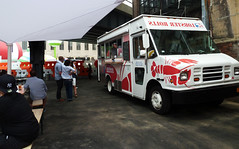Groupon, the popular deal-of-the-day website, recently announced that it will now join the already crowded waters of mobile payments. With the launch of Groupon Payments, merchants are now able to accept credit and debit cards by swiping through a card reader attached to a smart device.

In an almost mirror proposal to its leading competitor, Square, Groupon touts that their service will guarantee the lowest rates possible, or match the lowest available. The new rates systems are structured in three tiers:
• Swiped transactions — MasterCard, Visa and Discover (1.8 percent plus 15 cents) and American Express (3 percent plus 15 cents)
• Keyed-in transactions — MasterCard, Visa and Discover (2.3 percent plus 15 cents) and American Express (3.5 percent plus 15 cents)
• Non-Groupon merchants can also sign up for the service, however, they will be charged slightly more (2.2 percent plus 15 cents for MasterCard, Visa and Discover)
Square offers 2.75% on all transactions or a flat $250 per month fee for businesses that generate less than $250,000 a year in revenue.
The new Groupon Payments Service also introduces a Merchant App. The app allows the merchant to accept daily deals, update business reports in real time, and also to scan and redeem Groupons which could attract those who already participate in offering Groupons to customers. The app will primarily be operated by the merchant until the customer will need to designate a tip and sign a digital receipt with their finger as they would any ordinary credit card device.
After the transaction is complete, the customer will receive an email with an electronic receipt.
Payments through Groupon will have a quick turnaround. Merchants will be able to view transactions online immediately, and will be receive cash in their bank accounts from transactions of the day overnight.

As far as physical card swipers, Groupon has developed two methods to attach the reader to smart phones; a card reader dongle attachment, and a sturdy phone case. The card reader dongle attachment in appearance is like any of the ubiquitous card readers that are offered by Square and other services. The phone case reader is just that, a phone case that is attached to the smart phone in a sturdy non-intrusive package. The dongle is free when merchants sign up for Groupon Payments, the phone case on the other hand is available for $100.
In an interview with AllThingsD, Mihir Shah, Groupon’s VP of Mobile and Merchant Products, noted that he doesn’t think that Groupon Payments will compete with Square, rather it is targeting existing “Groupon merchants, who are running a brick-and-mortar restaurant business, like a restaurant or spa, and have already been accepting credit cards for a long time, and have high volumes,” he said. “The thing that comes up again and again is credit card processing, and we think they are paying too much.”
Though Groupon (NASDAQ: GRPN) stock price has dipped in recent months they aim to diversify their revenue streams by entering the already crowded waters of alternative mobile payments market. As the mobile payments space grows, services will attempt to one-up each other in order to become more appealing to, the real benefactors of their efforts, merchants and customers.
ABOUT THE AUTHOR
Phil Ng
is a Social Media Analyst at IIR USA with a specialized focus on
technology and technology culture. He may be reached at PNg@iirusa.com.

|
Share this article with your social network, just click below to share now!
|
|
|









